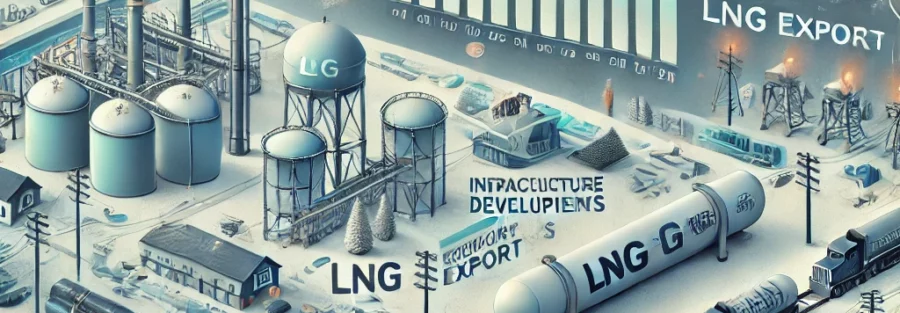The natural gas price outlook for 2025 is cautiously optimistic, shaped by a combination of global demand trends, supply-side constraints, and weather-related uncertainties.
According to analysts at BofA Securities, U.S. Henry Hub prices are projected to average $3.33/MMBtu for 2025, signaling a recovery from the subdued levels experienced throughout much of 2024.
In 2024, natural gas prices remained weak, fluctuating mostly between $2 and $3/MMBtu, making it the lowest-performing year since the pandemic-driven decline in 2020. This trend persisted despite record domestic demand, which exceeded 78 billion cubic feet per day (Bcf/d) due to increased power generation needs and steady industrial activity. However, warmer-than-expected winter weather in 2023–24 reduced residential and commercial heating demand, further pressuring prices.
Looking ahead to 2025, several factors are expected to tighten the natural gas market and drive prices higher. A major catalyst is the anticipated growth in liquefied natural gas (LNG) exports, as new facilities such as the Plaquemines and Corpus Christi Stage 3 projects begin operations. These expansions are likely to significantly increase U.S. feedgas demand, placing additional pressure on domestic supply and supporting price growth. Rising pipeline exports to Mexico, which hit record levels in 2024, further highlight the growing international demand for U.S. natural gas.
Domestically, production constraints could also influence the price trajectory. While U.S. dry gas production remained strong in 2024, averaging around 101 Bcf/d, capital discipline among exploration and production companies suggests limited capacity to rapidly scale up output in response to price increases.
Producers have deliberately held back supply, waiting for a more favorable pricing environment. Analysts caution that if supply fails to keep pace with the expected increase in demand, the market could see a significant upward price adjustment.
Weather patterns remain an unpredictable factor. Current forecasts indicate that the winter of 2024–25 may be about 2°F colder than the previous year, potentially adding 500 Bcf to seasonal demand. Conversely, if temperatures are warmer than expected, price increases could be muted. Historically, colder winters have been linked to sharp price spikes, highlighting the market’s sensitivity to heating demand.
The ongoing transformation of the U.S. power generation landscape also supports a positive outlook for natural gas. The continued retirement of coal-fired power plants, combined with the expansion of renewable energy, has reinforced natural gas’s role as a key transitional fuel. Despite growing wind and solar capacity, natural gas is expected to bridge gaps in energy production during periods of low renewable output, underscoring its importance in the evolving energy mix.





